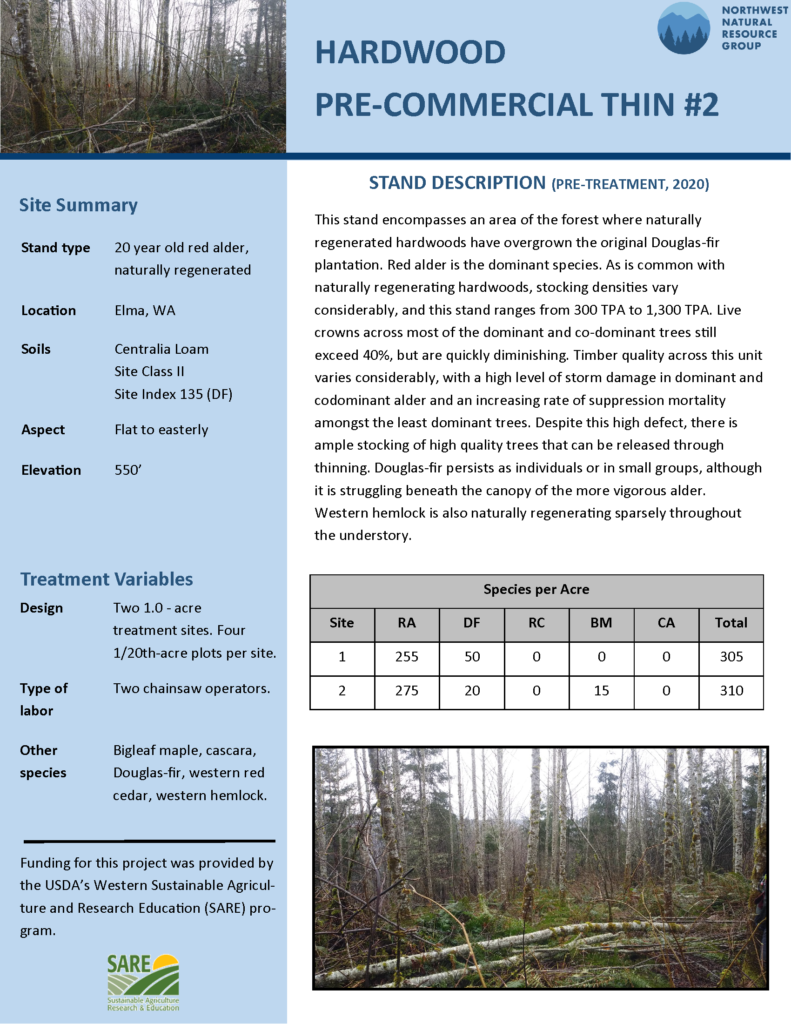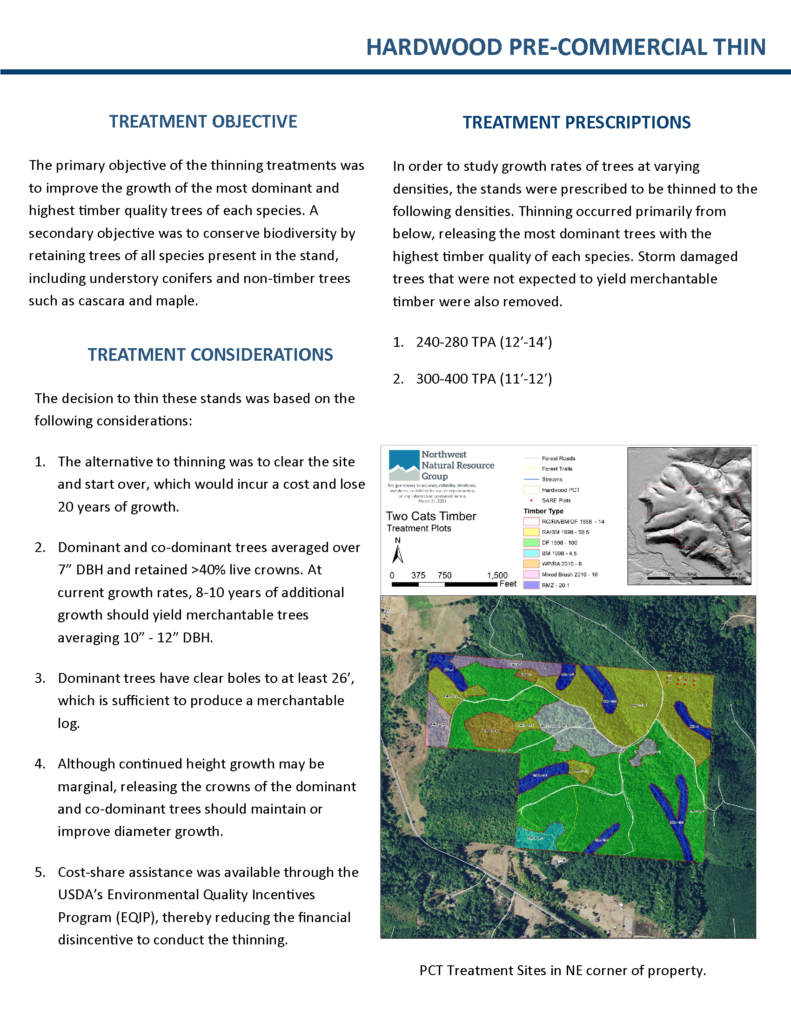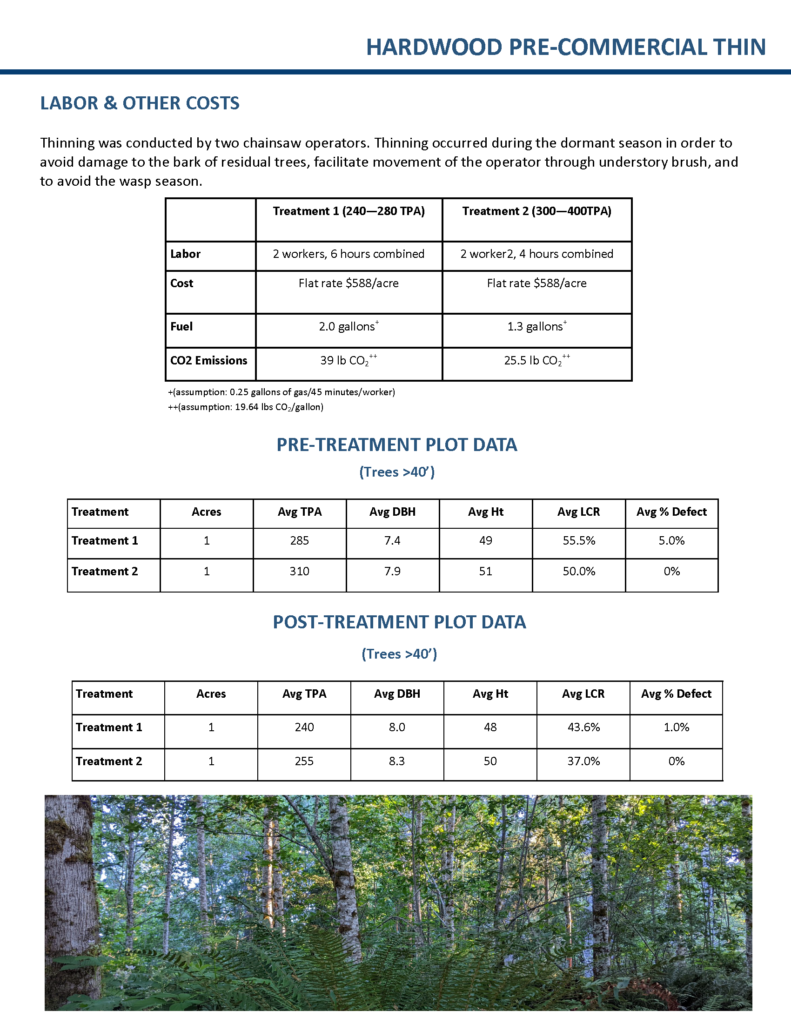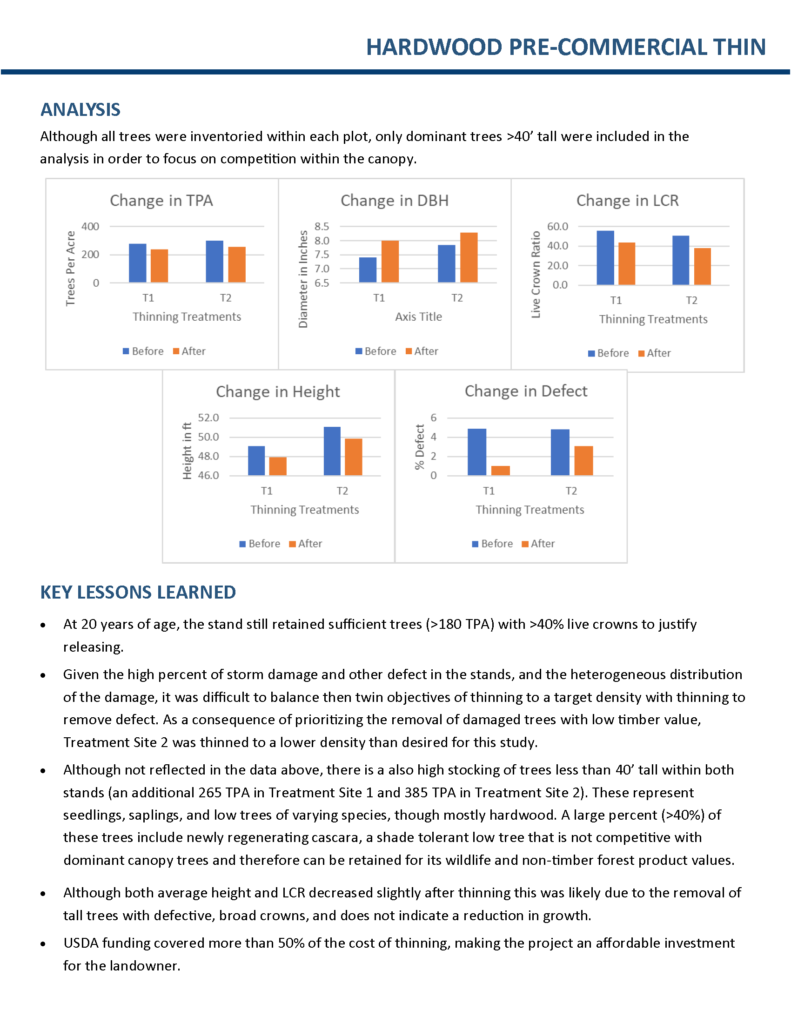TWO CATS TIMBER
The Two Cats Timber is a privately owned 200-acre woodland located near Elma, WA. Nearly the entire forest was clearcut in 1998 by the previous owner and replanted with Douglas-fir. Since then, multiple native species of hardwoods and conifers have colonized the property, resulting in a highly diverse, and very dense third-growth forest. One management challenge facing the forest owners is overstocking and competition within, in particular, red alder dominated stands. Red alder naturally colonized many areas of the forest at high densities, and is now competing directly both with itself and the planted fir.
This forest owner has received funding through the USDA’s Environmental Quality Incentives Program (EQIP) to offset the cost of the pre-commercial thinning of this stand.
YOUNG RED ALDER STAND PCT
Below is a summary of the case study. Click here for a PDF version of the case study.




